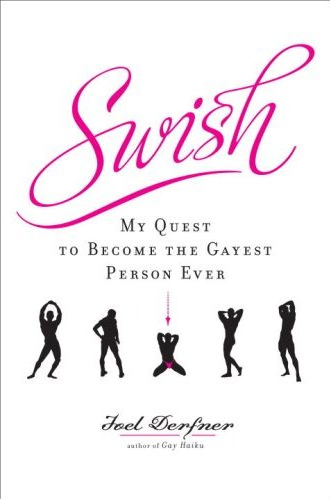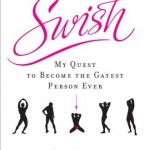On Monday, I gave you what I hope was a dandy scare about the passive protagonist problem: when the action of a book occurs around the main character, rather than her participating actively in it — or (dare I say it?) CAUSING it. As I intimated yesterday (and the week before, and a year ago, and…), passive protagonists tend to annoy professional readers.
Wondering why I’ve been hitting this particular manuscript megaproblem with such vim? While naturally not every single agent, editor, contest judge, or screener in the biz will instantly stop reading the moment the leading character in a novel stops to contemplate the world around him, at any given moment, thousands and thousands of submissions sitting on professional readers’ desks feature protagonists who do just that.
Often for pages and chapters at a time. It would start to annoy you eventually, too.
So perhaps it’s understandable that the average screener’s reaction to encountering inert characters tends to be a trifle reflexive. One doesn’t need to pull all that many pans out of hot ovens without using mitts to start snatching one’s hands away from blister-inducing surfaces, after all.
“But if the pros dislike character passivity so much,” I hear some of you asking, “why don’t they just TELL writers so? How hard would it be to post on their websites or include in their agency guide listings, ‘No passive protagonists, please?”
As is the case with so many basic facts of publishing, they DO tell aspiring writers about it — but usually in terms that you’d have to read 50 manuscripts a week to translate accurately. “I couldn’t identify with the character,” is a fairly common euphemism for Passive Protagonist Syndrome.
Was that giant thump I just heard a thousand jaws hitting the floor? Let me guess: you thought you were the only submitter who had ever heard this, right?
Would you be surprised to learn that this is one of the single most common pieces of individualized rejection feedback writers receive? So I would imagine that quite a few of you — at least, the ones who have been querying diligently — have seen this little number in rejection letters.
Hands up, anyone who received such a response and instantly thought, “Oh, I’d better make my protagonist more active, by gum.” Anyone? Anyone?
Of course, there are other reasons a screener (who is usually the one weeding out submissions at a big agency, by the way, rather than the agent) might not have identified with a protagonist OTHER than passivity. But it is one of the more common.
Other rejection-speak that might translate as an appeal for more activity: “I didn’t like the main character enough to follow him through an entire book,” “There isn’t enough conflict here,” and the ever-popular, “I just didn’t fall in love with the protagonist enough to pick up the book.”
However, since this last euphemism has about as many meanings as aloha, it’s often difficult to translate exactly: I have seen it mean everything from, “The first paragraph bored me” to “I hate books about brunettes.”
You’d be amazed what a broad range of issues folks on the business side of the biz will lump under the general rubric of writing problem, too.
“But Anne,” I hear some of you slice-of-lifers fume, “this is grossly unfair! Surely, this is not a reaction that every reader would have to a slightly lackadaisical character — and in case you haven’t noticed, the world is stuffed to the gills with people who do not rush headlong into conflict at the slightest provocation. Haven’t you ever heard of REALISM?”
Oh, I think that this problem is ALL about realism — I suspect the underlying problem here is that writers tend to identify with passive protagonists far, far more than other readers do. (And just to give you a heads-up, imaginary protestors: professional readers generally HATE it when aspiring writers accuse them of having invented the marketing reality that certain books are harder to sell than others. Really.)
There’s good reason for it, of course: we writers spend a LOT of time and energy watching the world around us, capturing trenchant observations and seeing relationships in ways nobody ever has before. So we tend to think of people who do this as likeable, charming, interesting people.
The average fiction or memoir agent, to put it mildly, does not share this opinion. Nor does the average editor of same; even those who publish books by journalists — who are, after all, trained to be primarily observers — want the SUBJECTS of those stories to be active.
For one simple reason: because such stories are, by and large, infinitely easier to sell to readers.
It helps to remember that we writers are far from normal readers. We buy a disproportionate share of any year’s crop of literary fiction, for instance, as well as much of the short story collections and masses of poetry. We pore over books in our chosen genre, following our favorite authors’ careers with a loyalty and intensity that others reserve for sports stars.
We are, in fact, an extremely specific market niche, and it would be interesting to try to make the case that a particular piece of literary fiction could be marketed successfully to writers-who-read, specifically on the grounds that its protagonist DOES think like a writer, observing.
However, if you are writing in most of the established book categories, I can virtually guarantee that writers will not be your primary target audience.
And that’s something of a pity, because from a writer’ point of view, one of the great fringe benefits of the craft is the delightful ability to make one’s after-the-fact observations on a situation appear to be the protagonist’s first reactions — and one of the simplest ways to incorporate our shrewd observations on the human condition seamlessly into a text is to attribute them to a character.
Writers who read LOVE that.
Which is fine, until the protagonist becomes so busy observing — or feeling, or thinking — that it essentially becomes his full-time job in the book. Since in the two of the three most common fictional voices — omniscient narrator, first person, and tight third person, where the reader hears the thoughts of the protagonist — the observing character is generally the protagonist, this propensity sometimes results in a book centered on someone who is too busy observing others to have a life of his or her own.
Yes, you did just draw the correct conclusion there: on the page, being purely reactive seldom comes across as all that fascinating a life.
That sentiment just stirred up some reactions out there, didn’t it? “But Anne,” I hear some reactivity-lovers cry, “my protagonist has a rich and full emotional life in responding to stimuli around him. His mental activity is prodigious. If that was good enough for Mr. Henry James, why shouldn’t it be good enough for me?”
Well, for starters, have you taken a gander at some of Mr. James’ sentences lately? Some of them are two pages long; even Dickens would have blushed at that.
More to the point, from a reader’s point of view, a protagonist’s being upset, resentful, or even wrestling within himself trying to figure out the best course of action is NOT automatically dramatic. To compound that blasphemy, allow me to add: thought about interesting matters does not necessarily make interesting reading.
In the throes of eliciting solid human emotion or trenchant insight, writers can often lose sight of these salient facts.
Why aren’t internal dynamics inherently dramatic, you ask? Because whilst the mind is churning, the entirety of protagonist’s glorious energy expenditure typically is not changing the world around her one iota.
Don’t believe me? Here’s how the phenomenon generally plays out in otherwise solid, well-written manuscripts:
(1) The protagonist is confronted with a dilemma, so she worries about for pages at a time before doing anything about it (if, indeed, she does do anything about it at all).
(2) If it’s a serious problem, she may mull it over for entire chapters. Or volumes of a trilogy.
(3.) When the villain is mean to her, instead of speaking up, she will think appropriate responses.
(4) At some point, she will probably talk it all over with her best friend(s)/lover(s)/people who can give her information about the situation before selecting a course of action. (See parenthetical disclaimer in #1.)
(5) Even in the wake of discovering ostensibly life-changing (or -threatening) revelations, she takes the time to pay attention to the niceties of life; she is not the type to leave her date in the lurch just because she’s doomed to die in 24 hours.
(6) When she has assembled all the facts and/or figured out what she should do (often prompted by an outside event that makes her THINK), she takes action, and the conflict is resolved.
Is it me, or is this progression of events just a TAD passive-aggressive? Especially in plotlines that turn on misunderstandings, wouldn’t it make more sense if the protagonist spoke DIRECTLY to the person with whom she’s in conflict at some point?
Gee, one might almost be tempted to conclude that writers as a group are confrontation-avoiders. Nah…
Often, writers will have their protagonists keep their more trenchant barbs to themselves in order to make them more likable, especially if the protagonist happens to be female. But an inert character who is nice to all and sundry is generally LESS likable from the reader’s point of view than the occasionally viper-tongued character who pushes situations out of the realm of the ordinary and into the conflictual.
Because, as I MAY have mentioned before, conflict is entertaining. On the page, if not in real life.
Again, real-life situations do not necessarily translate well to the page. While pitting virtuous and forbearing protagonists against aggressive bad folks (who often bear suspicious resemblances to the writer’s “ex-friends, ex-lovers, and enemies,” as the bard Joe Jackson likes to call them) is probably a pretty healthy real-world response, emotionally speaking, it can be deadly on a page. Sitting around and resenting, no matter how well-justified that resentment may be, is awfully darned hard to convey well in print.
But that doesn’t stop us from trying, does it?
Let’s face it, one of our collectively favorite means of showing resentment, angst, or just plain helplessness is to have the protagonist THINK pithy comebacks, uncomfortable reactions, pointed rhetorical questions, and/or outraged cris de coeur against intractable forces.
Instead of, say, uttering these sentiments out loud, which might conceivably provoke a confrontation (and thus the conflict so dear to agents’ hearts), or doing something small and indirect to undermine the larger conditions the protagonist is unable to alter.
Yes, people mutter to themselves constantly in real life; few of us actually tell of the boss in the way s/he deserves. However, at the risk of sounding like the proverbial broken record, just because something actually occurs does not necessarily mean that it will make good fiction.
What does make good fiction is conflict. Lots of it. On every page, if possible.
This is not to say, of course, that every protagonist should be a sword-wielding hero, smiting his enemies right and left — far from it. But even the mousiest character is capable of acting out from time to time.
And yes, I AM about to give you another assignment. How clever of you to see it coming.
Whip out those Post-It notes and highlighting pens and start running through your manuscript, seeking out silent blowings-off of emotional steam. Whenever you find them, check to see if there is conflict on the rest of the page — and if your protagonist is taking part in it actively, only in thought, or simply as an observer.
Depending upon what you find in each instance, here are some possible next steps. (Fair warning: some of these are going to sound a wee bit familiar from Monday’s assignment, as we’re talking about fixing the same phenomenon.)
(1) If there’s not conflict on the page, ask yourself: how could I add some? Or, if you’re trying to avoid adding length to the manuscript, are there elements slowing down the scene that you could cut? Does this interaction add enough to the plot or character development that it actually needs to be there?
(2) If your protagonist is active, pat yourself on the back. Then ask yourself anyway: is there something even more interesting s/he could do here? A way that her reaction could surprise the reader a little more, perhaps? Small twists go a long way toward keeping a reader involved.
(3) If your protagonist is merely thinking her response, go over the moments when she is silently emoting. Is there some small tweak you could give to her response that would make it change the situation at hand? Or — and it’s astonishing how infrequently this solution seems to occur to most aspiring writers — could she say some of the things she’s thinking OUT LOUD?
(4) If your protagonist is a pure observer in the scene, sit down and figure out what precisely the observed interaction adds to the book. Are there ways that you could achieve the same goals in scenes where your protagonist is a stronger player?
If you find yourself worrying that these textual tweaks may cumulatively transform your protagonist a charming, well-rounded lump of inactivity into a seething mass of interpersonal problem generation, consider this: many agents and editors like to see themselves as people of action, dashing swashbucklers who wade through oceans of the ordinary to snatch up the golden treasure of the next bestseller, preferably mere seconds before the other pirates spot it. Protagonists who go for what they want tend to appeal to them.
More, at any rate, then they seem to appeal to most writers. Please bear in mind that before your work can speak to your target market of readers, it has to please another target market: agents and editors. Even if you have good reason to keep your protagonist from confronting his challenges directly — and you may well have dandy ones; look at Hamlet — he will still have to keep in motion enough to please this necessary first audience.
So while you’re editing, ask yourself: how can I coax my protagonist out of his head, and into his story? How can his actions or words alter this particular moment in the plotline, if only a little?
As individuals, we can’t always more mountains, my friends, but we can usually kick around a few pebbles. Give it some thought, and keep up the good work.
(PS: the original of the doctored photo above appears on FreeFoto.com.)





















